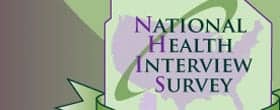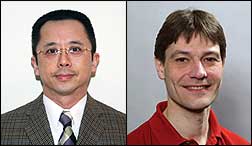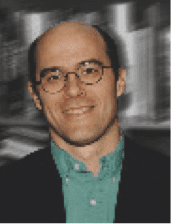The National Institute on Deafness and Other Communication Disorders (NIDCD) reports that one in six US adults aged 18 and older reports trouble hearing without a hearing aid, according to new results from a nationally representative survey looking at hearing and hearing loss.

The NHIS is a nationally representative survey that uses personal household interviews to gather information about a range of health topics. The annually-conducted survey contains a series of core questions—including the question about trouble hearing without the assistance of a hearing aid—that are asked every year and remain largely unchanged. The researchers also analyzed data obtained through supplemental questions about hearing. The study analyzed information about one adult randomly selected from each participating family.
The analysis was done by researchers from NCHS and NIDCD. The NIDCD, which also co-funded the study, collaborated with NCHS on the development of the core and supplemental NHIS questions regarding hearing.
The findings show that, of the 16.8% of adults in the study who report trouble hearing, adults aged 70+ are more likely to report trouble hearing (43.2%) compared to those aged 40–69 (19.0%), and those aged 18–39 (5.5%). Interestingly, men in each age group are more likely to report having trouble hearing compared to women, and men are more likely to describe having “moderate trouble” hearing (24.8%) compared to women (20.8%). For those aged 70 and older, 52.4% of men report trouble hearing without a hearing aid compared with 36.2% of women. The researchers also found differences between men and women in the self-reported causes of hearing loss.
Overall, among those reporting that they have trouble hearing, nearly two-thirds (62.6%) say that they have mild hearing loss, defined as “a little trouble hearing.” Less than 2% of adults who indicate they have any trouble hearing are deaf.
Less than half (46.0%) of adults aged 18 and older who report any trouble hearing have seen a doctor or other health professional about their hearing or ear problems in the last five years. Those aged 70 and older who report any trouble hearing are more likely (56.8%) to have seen a doctor or health professional about their hearing, compared to those aged 40–69 (41.6%) and those aged 18–39 (38.1%).
The data brief from the survey also highlights age differences in the use of hearing aids or assistive technology, which included FM systems, instant or text messages, or amplified telephones. Less than one-quarter (21.5%) of adults who report any trouble hearing have ever used a hearing aid, while 9.1% have ever used assistive technology. Adults aged 70 and older are much more likely to report having used hearing aids (42.0%) compared with those aged 40–69 (13.5%), and those aged 18–39 (4.7%). The use of assistive technology, however, is more likely among those aged 18–39 (12.1%) and least likely among those aged 40–69 (7.7%).
Men are more likely to attribute their hearing loss to long-term noise exposure (35.6%) or loud, brief noises, like gunfire or explosions, (14.8%) compared to women, 10.8% and 2.1%, respectively. Almost half of women (45.3%) say that the main reason for their hearing loss is the result of getting older or aging compared with men (24.5%). Women are more likely to report ear infections or otitis media as the main cause of their hearing loss (10.9%) compared to men (4.7%).
According to the NIDCD, the data provide insight into how people assess and seek treatment for their individual hearing loss.
Source: NIDCD, NIH; NCHS




